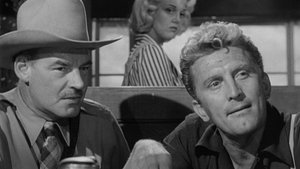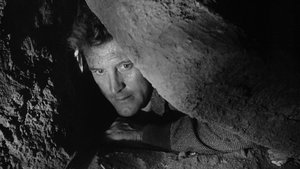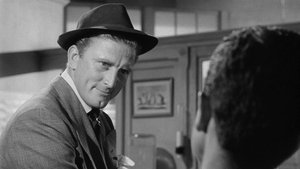Contact: info@alwanfilm.com
Video Sources 0 Views
- Watch trailer
- Ace in the Hole


Ace in the Hole 1951 Colorized
Synopsis
Table of Contents
ToggleReview: Ace in the Hole 1951 Colorized – A Dark and Compelling Examination of Media Sensationalism

Introduction
Released in 1951, Ace in the Hole is a gripping drama directed by the legendary Billy Wilder. The film delves into the darker aspects of human nature and the media’s role in shaping public opinion. With its thought-provoking narrative and powerhouse performances, Ace in the Hole 1951 Colorized remains a relevant commentary on the sensationalism of the news media. In this review, we’ll explore the impact of Ace in the Hole 1951 Colorized and its exploration of ethical dilemmas and the pursuit of fame.
Check The Full Colorized Movies List
Check Our Colorized Movies Trailer Channel
Understanding Ace in the Hole 1951 Colorized: Director, Cast, and Genre
Directed by Billy Wilder, Ace in the Hole 1951 Colorized boasts a stellar cast led by Kirk Douglas as Chuck Tatum, a morally ambiguous journalist seeking redemption. The film falls within the genre of film noir, known for its dark themes, morally complex characters, and atmospheric cinematography.
Exploring the World of Ace in the Hole 1951 Colorized: Plot and Characters
Set in the desolate landscape of New Mexico, Ace in the Hole 1951 Colorized follows Chuck Tatum, a down-on-his-luck reporter who sees an opportunity for redemption when he stumbles upon a tragic mining accident. Sensing a chance to revive his career, Tatum manipulates the situation to prolong the rescue effort, turning the tragedy into a media spectacle. As the story unfolds, Tatum’s ruthless pursuit of fame and fortune leads to tragic consequences for those involved.
The Art of Film Colorization
While Ace in the Hole 1951 Colorized was originally filmed in black and white, its early colorized version adds a new layer of visual richness and depth to its atmospheric portrayal of the American Southwest. The colorization process enhances the film’s visual impact and captures the stark beauty of its desert setting with stunning visual clarity.
Early Colored Films: A Brief History
The history of early colored films is marked by innovation and experimentation as filmmakers sought to enhance the visual appeal of their movies. From hand-tinted frames to pioneering technicolor processes, the evolution of colorization techniques transformed the cinematic landscape, offering audiences a new way to experience classic stories and immersive settings.
Ace in the Hole 1951 Colorized and Its Early Colored Version
The decision to release Ace in the Hole in a colorized format was made with the intention of immersing audiences in the rugged beauty of its desert setting and enhancing the film’s visual impact. While some purists may prefer the original black and white version, the early colorized edition of the film adds a new dimension to its storytelling and captures the atmospheric beauty of its setting with stunning visual clarity.
The Debate Over Film Colorization
The debate over film colorization continues to divide audiences and industry professionals alike. While some argue that colorization breathes new life into classic films and makes them more accessible to modern audiences, others maintain that it compromises the artistic integrity of the original work. As technology advances and filmmaking techniques evolve, the debate over colorization remains a topic of ongoing discussion within the film community.
Examining Ace in the Hole 1951 Colorized as an Early Colored Film
Viewing Ace in the Hole in its early colorized iteration offers audiences a fresh perspective on its atmospheric portrayal of the American Southwest. The colorization process enhances the film’s visual impact and captures the stark beauty of its desert setting with stunning visual clarity. As Chuck Tatum’s relentless pursuit of fame and fortune unfolds, the audience is drawn into a world of moral ambiguity and ethical dilemmas that resonates with timeless relevance.
Influence and Legacy: Ace in the Hole 1951 Colorized’s Impact on Cinema
Ace in the Hole 1951 Colorized is widely regarded as a seminal work of film noir that explores the darker aspects of human nature and the media’s role in shaping public opinion. Its thought-provoking narrative, morally complex characters, and atmospheric cinematography have inspired generations of filmmakers and influenced the portrayal of sensationalism and media ethics in cinema. As a testament to its enduring relevance, Ace in the Hole remains a timeless masterpiece that continues to captivate audiences with its gripping storytelling and profound insights into the human condition.
Director’s Cinematic Legacy: Beyond Ace in the Hole 1951 Colorized
Billy Wilder’s directorial legacy extends far beyond Ace in the Hole, encompassing a diverse body of work that explores a wide range of themes and genres. As a filmmaker, Wilder was known for his sharp wit, biting satire, and uncompromising dedication to his craft. Ace in the Hole stands as a testament to his talent and creativity, solidifying his reputation as one of the great directors of his time.
Themes Explored in Ace in the Hole (1951)
At its core, Ace in the Hole explores themes of media sensationalism, moral corruption, and the pursuit of fame at any cost. Through its morally complex characters and atmospheric setting, the film delves into the darker aspects of human nature and the destructive power of unchecked ambition. As Chuck Tatum’s relentless pursuit of fame leads to tragedy and ruin, the audience is forced to confront uncomfortable truths about the nature of celebrity and the ethics of journalism.
Reception and Controversy Surrounding Ace in the Hole 1951 Colorized
Upon its release, Ace in the Hole received widespread critical acclaim for its thought-provoking narrative, powerhouse performances, and atmospheric cinematography. However, the decision to release the film in a colorized format sparked debate among fans and critics alike. While some praised the colorization process for enhancing the film’s visual impact, others questioned its necessity and expressed concern about preserving the integrity of Wilder’s original vision.
Where to Watch Ace in the Hole 1951 Colorized Online
For those eager to experience Ace in the Hole for themselves, the film is readily available on popular streaming platforms such as Amazon Prime Video, Google Play Movies, and iTunes. Whether viewed in its original black and white format or its early colorized iteration, Ace in the Hole offers a gripping and thought-provoking cinematic experience that is sure to resonate with audiences.
FAQs About Ace in the Hole 1951 Colorized
1. Is Ace in the Hole 1951 Colorized based on a true story?
No, Ace in the Hole is a fictionalized portrayal of media sensationalism and the pursuit of fame at any cost. While the characters and storyline are works of fiction, the film’s exploration of moral corruption and the ethics of journalism draws inspiration from real-life events and universal human experiences.
2. Who starred in Ace in the Hole?
Ace in the Hole stars Kirk Douglas as Chuck Tatum, the morally ambiguous journalist at the center of the story. His compelling performance brings depth and authenticity to the character, capturing the complexities of Tatum’s moral descent with stunning clarity.
3. What is the central message of Ace in the Hole?
At its core, Ace in the Hole delivers a powerful message about the destructive power of media sensationalism and the pursuit of fame at any cost. Through its morally complex characters and thought-provoking narrative, the film challenges viewers to confront uncomfortable truths about the nature of celebrity and the ethics of journalism.
4. Why was Ace in the Hole released in a colorized format?
The decision to release Ace in the Hole in a colorized format was made with the intention of immersing audiences in the rugged beauty of its desert setting and enhancing the film’s visual impact. While some purists may prefer the original black and white version, the early colorized edition of the film adds a new dimension to its storytelling and captures the atmospheric beauty of its setting with stunning visual clarity.
5. What is the legacy of Ace in the Hole?
Ace in the Hole is widely regarded as a seminal work of film noir that continues to captivate audiences with its gripping narrative, morally complex characters, and atmospheric cinematography. Its enduring legacy has inspired generations of filmmakers and influenced the portrayal of media sensationalism and the ethics of journalism in cinema.
6. Are there any sequels or remakes of Ace in the Hole?
While there have been no official sequels or remakes of Ace in the Hole, the film’s enduring popularity has inspired countless adaptations and reinterpretations in various media. However, none have achieved the same level of critical acclaim or cultural significance as the original 1951 film.
7. Where can I watch Ace in the Hole online?
For those eager to experience Ace in the Hole for themselves, the film is readily available on popular streaming platforms such as Amazon Prime Video, Google Play Movies, and iTunes. Whether viewed in its original black and white format or its early colorized iteration, Ace in the Hole offers a gripping and thought-provoking cinematic experience that is sure to resonate with audiences.
Conclusion
In conclusion, Ace in the Hole (1951) remains a timeless masterpiece of film noir that explores the darker aspects of human nature and the media’s role in shaping public opinion. Whether viewed in its original black and white format or its early colorized iteration, Billy Wilder’s gripping exploration of media sensationalism and the pursuit of fame at any cost continues to captivate audiences with its thought-provoking narrative, morally complex characters, and atmospheric cinematography.
As Chuck Tatum’s ruthless ambition leads to tragedy and ruin, the audience is forced to confront uncomfortable truths about the nature of celebrity and the ethics of journalism, making Ace in the Hole a compelling and relevant commentary on the sensationalism of the news media. With its enduring legacy and profound insights into the human condition, Ace in the Hole stands as a timeless classic of cinema that continues to resonate with audiences for generations to come.




















